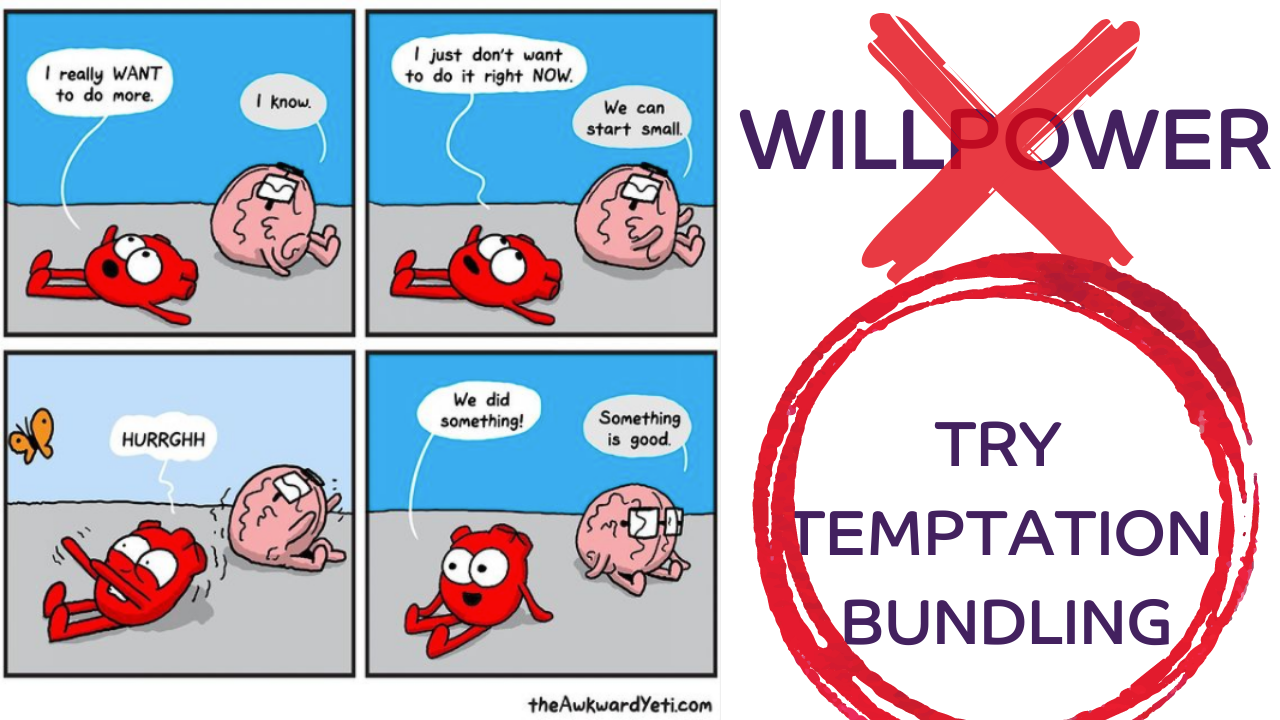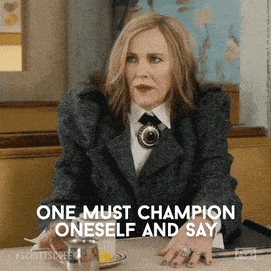Temptation Bundling For Habit Change
Oct 24, 2021
“I don’t have the energy to go to the gym after a long day at work; I don’t have the time to think about meal prep; I don’t have any willpower.” Does this sound familiar? The list could go on forever. How often have you heard that if only you had enough willpower, you could achieve anything? In the same sentence, you also hear that willpower is finite, which means you only have a limited amount of it. So the conundrum then becomes, when do I use my willpower and what for? So many things to do, so little willpower. This concept also implies that you’re doomed to fail if you don’t use your willpower wisely. What if the idea of willpower is overrated, and there are more realistic ways to achieve change and include healthier habits?
There is, and it’s called Temptation Bundling, a term coined by Dr. Katy Milkman, a professor at the Wharton School of the University of Pennsylvania and Penn’s Perelman School of Medicine. She is a behavioral economist, and her research focuses on using economics and psychology to find mechanisms for healthy behavior change. I first heard of Dr. Milkman on a podcast. Because understanding why people behave a certain way and why it can be so difficult to change behaviors is incredibly fascinating to me, I’ve been researching it ever since. Everyone that knows me knows that it’s impossible to dangle an interesting-topic carrot in front of me without expecting me to go on a deep dive. I believe that everyone benefits from this character trait because now I am sharing my results with you. You’re welcome.

Temptation bundling is the concept of combining two activities - one that you like to do and one that you don’t want to do but would like to start doing. The desired outcome is that you successfully implement a new healthy habit into your life. A few examples of temptation bundling are:
- Watching your favorite show while exercising. Maybe you watch it while on a treadmill, but you could also include movement/exercise in front of your TV at home.
- Listen to your favorite audiobook while cleaning the house. This one works for me like a charm.
- Ready for a pedicure but have a lot of work emails to catch up on? Bundle them up!
Another way to bundle habits, although without the temptation aspect, is to bundle healthy habits with activities you already do all day. Here are a few examples:
- Lunge around the house while brushing your teeth
- Add ten squats every time you get up from your office chair and when you sit back down. This bundle can add hundreds of squats to your workday and is incredibly easy to add. Once you get into this habit, you won’t even know how to sit down without adding the squats. You might get some funny looks at the restaurant, but they are just jealous :)
- Step in place while cooking
- Add some balance work while doing dishes by doing them on one leg.
The possibilities are endless. Have some fun with them.
Steps to start temptation bundling:
- Make a list of things that bring you great joy.
- Make a list of things that you want to start doing but are not motivated to.
- Which items on your “joy list” can you bundle with the “want to” list? Putting the lists in two columns can help with the overview and bundling.
- Bundle, baby, bundle!

Does it work?
Yes and no. According to Dr. Milkman, consistency is critical. I’m sure this concept doesn’t come as a surprise to you. Doing things repeatedly increases the chances of making it a habit. However, another factor that might be new to you is that being flexible in implementing these changes can help make them stick better. In her Tedx Talk, Dr. Milkman mentions that when people make concrete plans, such as setting a specific time and sequence to work out (i.e., every day at 5 am), they are more likely to follow that routine BUT they are less likely to complete their workout if they miss their pre-determined time. On the other hand, people that learn to be more flexible can be more successful at long-lasting habits because learning to adapt to sudden changes can make it easier to complete the goal regardless of time or day. For example, if you plan to work out at 5 am, but your dog kept you up all night, you can prioritize sleep and not get up but then still get your workout in later in the day. According to her, the more flexible people are, the more successful they are in creating life-long habits.
If you’re interested in Dr. Milkman’s research and exploration, I highly suggest her podcast Choicology.



